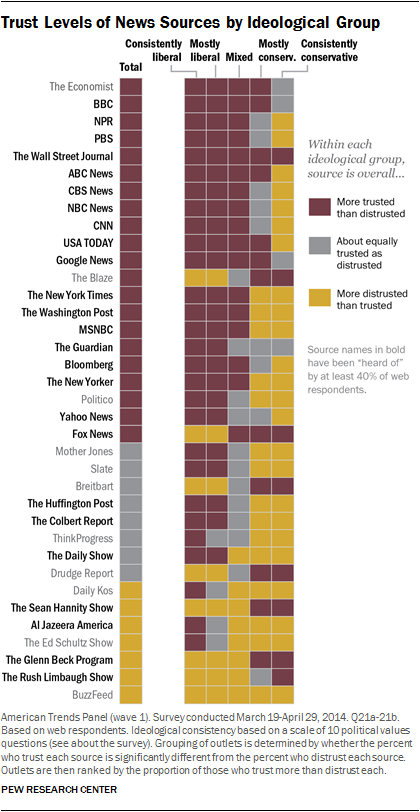Essential News Literacy Vocabulary
This vocabulary list comes from School Library Journal, "Truth, truthiness, triangulation: A news literacy toolkit for a “post-truth” world,"
confirmation bias: the tendency to believe information is credible if it conforms to the reader’s/viewer’s existing belief system, or not credible if it does not conform.
content farm or content mill: a company that employs a staff of freelance writers to create content designed to satisfy search engine retrieval algorithms with the goal of attracting views and advertising revenue.
echo chamber: an information environment in which people are surrounded by information that reinforces their already existing viewpoints, and varied or competing ideas are unlikely to be found or otherwise underrepresented.
fact checking: the act of verifying assertions.
herding phenomenon: as more journalists begin to cover a story, even more journalists join the herd, imitating the angle the story initially took rather than seeking alternative approaches.
native advertising: paid, sponsored content designed to look like the legitimate content produced by the media outlet.
triangulation or cross verification: establishing validity by using several research methods and analyzing and examining multiple sources in the hope that diverse viewpoints will shed greater light on a topic.
virality: the rapid circulation of media from one user to another. When we forward sensational stories, often from social media without checking their credibility in other sources, we increase their virality.
Essential Reading About News Literacy
If you teach, you need go no further than this article from School Library Journal, "Truth, truthiness, triangulation: A news literacy toolkit for a “post-truth” world," which discusses the role and ethical standards of the press, news literacy, and gives some "rules of thumb" for evaluating news sites, such as "triangulating" news stories, "check your own search attitude and biases," and "be suspicious of pictures." This article also includes an excellent news literacy vocabulary including "confirmation bias," "content mill," "satisficing," and "filter bubble."
This article also includes a comprehensive list of resources for a "post truth teaching toolkit."
News Literacy
- The News Literacy ProjectNews literacy teaches that all information is not created equal.
- Center for News LiteracyThe Center for News Literacy at Stony Brook University is committed to teaching students how to use critical thinking skills to judge the reliability and credibility of news reports and news sources. The center also develops curriculum materials for high school and the general public through its Digital Resource Center.
Trust Levels of News Sources
Fake News Research Guides
- Gustavus College "Fighting Fake News" research guide.
- Indiana University's "Fake News" research guide.
- Central Washington University's "Fake News: What it is & how to recognize it" research guide.
- Loyola Marymount University's "Keepin' it Real: Tips & Strategies for Evaluating Fake News" guide.
Reports: News Evaluation Habits
The Stanford University report about students' news evaluation habits, which raised the alarm about students' readiness to engage in civic culture.
Evaluating Information: The Cornerstone of Civic Online Reasoning: Stanford History Education Group
Pew Center report examines the way that people get information about government and politics through three different sources: social media, news media and the opinions of family and friends.
